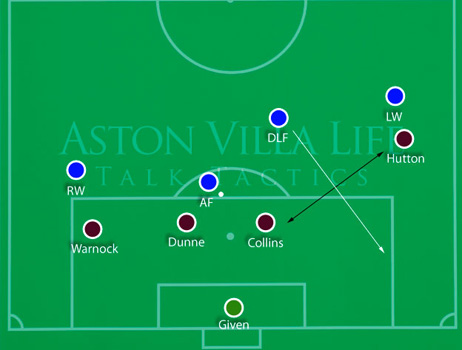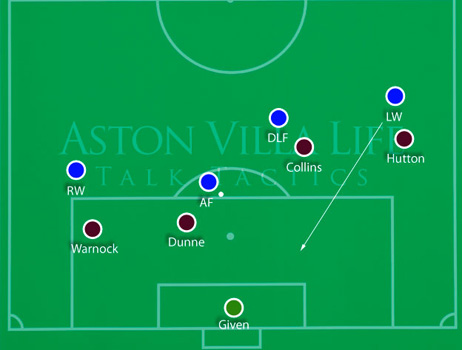

As fans are aware, Villa haven’t had the best of time in the past two seasons with the team declining from a solid defensive unit to one that is a lot more porous. Some may attribute this to the age of players, whilst others may put it down to the manager(s) in charge.
However, and this is following a discussion with one of our very own coaches (who shall remain nameless), there may be a simple answer to why Villa have failed to defend as well – because of a change in style and formation in recent years, and Villa’s inability to solve the problem due to current player limitations.
Over recent times, the introduction and usage of 4-5-1 variants, in particular the attacking 4-2-3-1 formation, has changed how the game has played. With footballing tactic being much like a game of chess, the simple change from a traditional 4-4-2 to 4-2-3-1 has caused issues for central defensive partnerships who lack athleticism.
Whilst logically a fan might think that having two defenders to cover a single striker might be advantageous for the defending team, the reality does not work out as simply.
In order to illustrate the point, I wanted to show a potential situation where Villa players might be up against a team playing such a strategy.
The first possibility that Villa can defend via is with both defenders sitting deep to deal with the attacking threat of the opposition striker. Whilst this may well solve a problem by nullifying the threat of the advanced forward, it leaves the deep lying forward/second striker with license to operate outside of the area unmarked. However, it does mean that the back line is held fairly rigidly. This is detailed below (white lines show movement of player, black line shows space to be exploited):
The second possibility is that Villa can pick up the second forward who is sitting back from the front. The issue here is that the back four is pulled out of shape rapidly with the defender tracking the opposition second striker susceptible to the pace, skill, or passing of the opposition’s attacking player. With Villa lacking the pace to keep up with a mobile second striker, moving forwards means risking letting any player with speed being able to exploit the holes left by that movement. This is detailed below (white lines show movement of players):
Last season, Villa’s tactics tended towards the first option with Alex McLeish invariably looking to make the most of a fairly immobile central pairing. As I discussed in my earlier piece about reconstructing the team on a budget, a key position to remedy will be the centre back pairing. By simply having more pace to deal with a deep lying forward’s movement, Villa are capable of competing man for man. Without such a change, Villa will always be at a disadvantage.
So simple tactics have played their part in Villa’s decline, admittedly coupled with the increasing age of the defence, with an inability to deal with new formations meaning a poor season.
If Villa do have a reported £25m to spend on their team, at least £15-20m needs to be invested in one or two centre halves who can keep pace with the attacking threats of 4-2-3-1 formations – such spending could prove invaluable in Villa’s attempts to improve the team.
I hope you enjoy the new Talk Tactics section, and our graphics as we move towards the new AVL 3.0 launch – we will be continuously improving the graphics as we reach a definitive final design.
If you are looking to improve your game and put extra power behind your tackles, why not try Maxiraw’s weight gainer?

